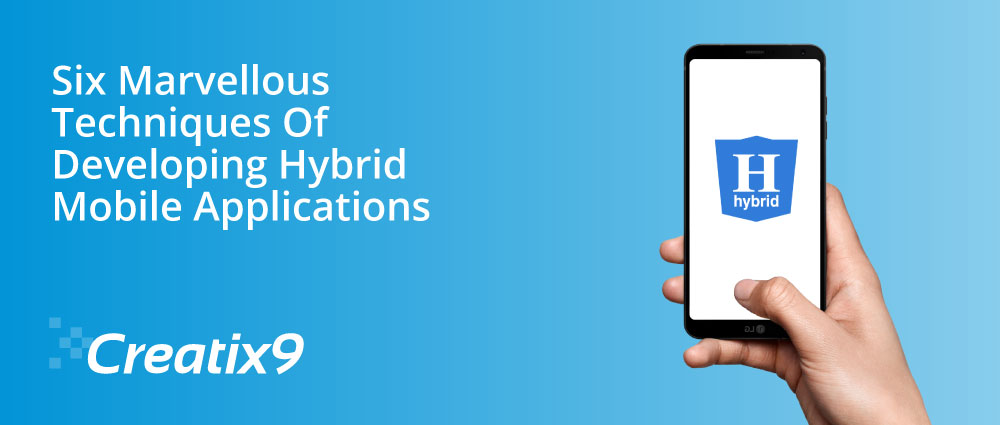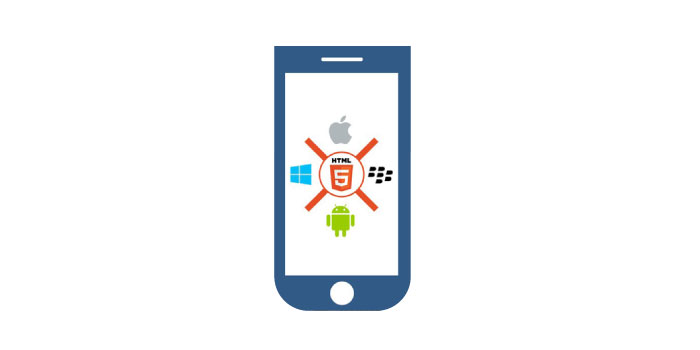
The basic definition of hybrid mobile app development is a process of creating a single application that can be run on different devices and platforms. It works on the WORA concept to write the application for once and run it anywhere and anytime. The reason for focusing on a hybrid is that it provides a combination of both native and web applications.
Businesses hire developers to build a hybrid app using fundamental web technologies such as Html5, CSS3, JavaScript, JQuery, JSON, and Ajax.
These are vital pillars of building a static structure and adding dynamic functionality to your website or smartphone app. Hybrid apps can be easily compiled and debugged to transform into native mobile apps. They can be run on android, iOS, windows, blackberry, and Symbian operating system platforms.
Here are the six marvellous techniques of developing hybrid mobile applications:
Researching And Planning

These are the initial techniques of doing research and making plans for creating hybrid applications. The first and foremost idea is to identify the fundamental requirements of your customers. It is an essential best practice in android application development to carefully research for your target audience.
The core purpose of planning is to know and understand the need of your customers. It is an excellent way to invest your time thinking and brainstorming ideas for designing the app interface and supporting infrastructure. Researching is the first phase of developing hybrid applications. It gives you a clear idea of what your customer needs from your mobile app.
Optimising The Hybrid Application Performance

Testing and running the speed performance of a hybrid application is a necessary technique to make sure the faster execution of an application on every device and platform. It reduces the server wait time and improves the load time of the hybrid app within three seconds of time.
Image Optimisation

Image load time is one of the most significant performance issues affecting page load on mobile devices. It is better to use images that are a perfect fit for your target audience’s devices and show a remarkable appeal. You can store images on your device with having a small file size and higher memory of your smartphone device.
Code Compression

Reducing your JavaScript and CSS files depend upon the size of code you write for your mobile app. More amount of code can harm the performance and productivity of your hybrid app. It is better to compress the size of your files to make them external so that the code can run faster and execute efficiently.
Picking The Right Technology

The selection for the right hybrid app depends on the client’s time, money, and resources. It is up to a customer to choose between native and cross-platform technology. The benefit of cross-platform is that it can work with iOS application development service. It allows you to select a single technology framework amongst ionic, angular, react native, and Cordova for making your app.
Developing A User-Friendly Hybrid App Architecture

A hybrid app architecture solely depends on the exact specification and requirement of your client project. Whether you create a hybrid, web, or native mobile app, it must be according to the industry standards and meet your customer requirements. The process of developing a hybrid application begins with a reliable and durable structure. It follows a strict set of rules and design patterns such as clean code and functional yet straightforward design architecture.
Building A Hybrid Mobile Application

It is an experimental stage of mobile app development that comes after planning and preparing a hybrid application. It requires you to know about the specification of your client and work accordingly. The process of building a hybrid app involves creating an app template, building a module design, setting up client routing, and writing database code.
Testing And Debugging

These are necessary testing techniques and debugging the coding errors to deliver a perfect hybrid app for both iOS and Android app stores. The idea of testing verifies alpha, beta, and final release versions of a hybrid mobile application. It can be run on the web and native platforms.
The loading speed and performance should also be checked before launching an app in the market for customers. Lastly, the price element should also be given worth consideration to establish a hybrid app at a reasonable cost in the market. The price range of hybrid apps ranges from ten thousand dollars and goes up to two lac fifty thousand dollars for gaming apps.
Bottom Line
Hence, in a nutshell, those mentioned above are valuable techniques for developing hybrid mobile applications. The demand for hybrid and cross-platform apps is increasing after the native mobile apps.
They can efficiently run on any device and ideal for small and large enterprise businesses to promote their niche industry apps. They are the future of mobile apps and will be dominant and prominent in the next coming years.

